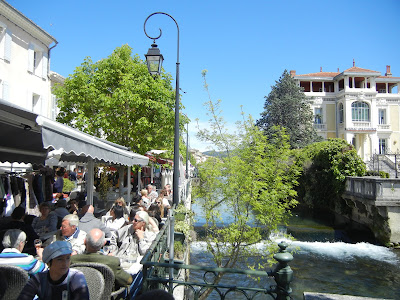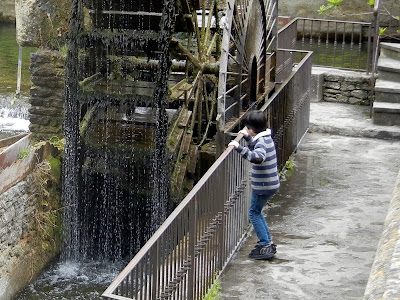Being there on Sunday was truly worthwhile. Besides the vibrant market, there are many waterside cafés and restaurants, and several picturesque water wheels (which were used as sources of energy for the milling, textile and paper-making industries). Walking along the canals and little bridges, you can’t help but notice how crystal clear the water is even as it runs through the town’s center.
We took a nice stroll through the town, but being Sunday we mostly took it easy. We sat
in the Grand Café de la Sorgue, one of the nice outdoor cafés, soaking in the Provence atmosphere and listening to Joe Dassin songs playing nearby, and later shopped along the quays or just had fun trying on silly hats. What a beautiful and memorable day we had.
L'Isle-sur-la-Sorgue means the island on the river Sorgue. The river flows through and around the town. Its source is located in the village of Fontaine de Vaucluse, not far from L'Isle-sur-la-Sorgue. It's one of the largest springs on earth. Our last day in Provence we visited Fontaine de Vaucluse. The town has a pretty main square, and there's a medieval waterwheel that still works and is used to mill paper.
But its main attraction is the cave in the mountain where the spring is located. The crater is supposed to be more than 300 meters deep, although apparently no one knows for sure. What impresses are the beautiful aquamarine and emerald green colors of the still water that pools at the base of a rocky cliff. A few meters from this pool the water is actually gushing up from the source, then splashing down over the rocks until it settles down in the wide expanse as it passes through the village.

















































